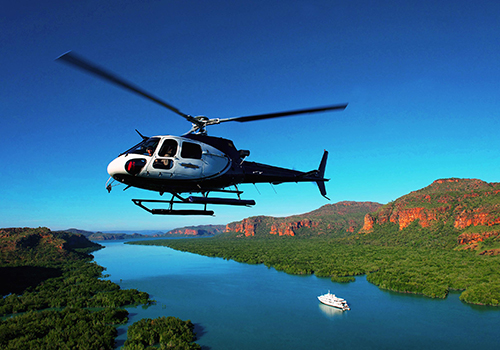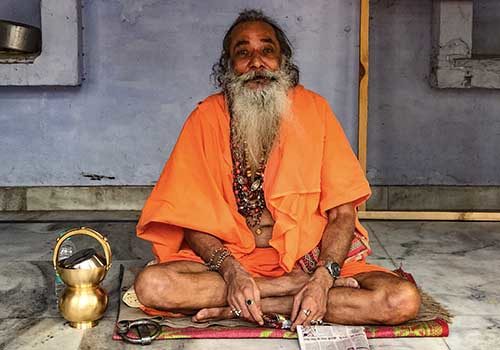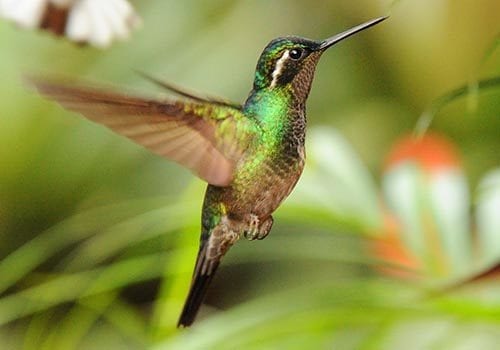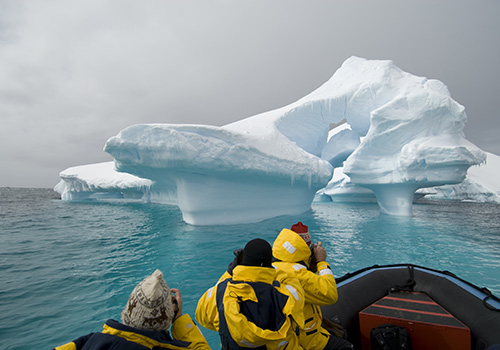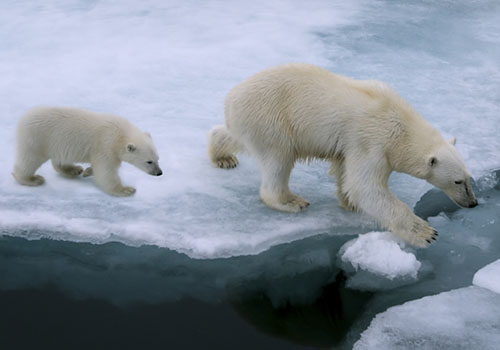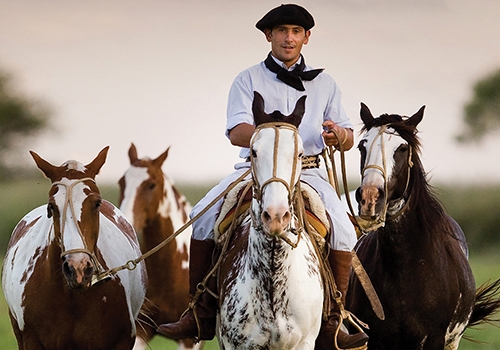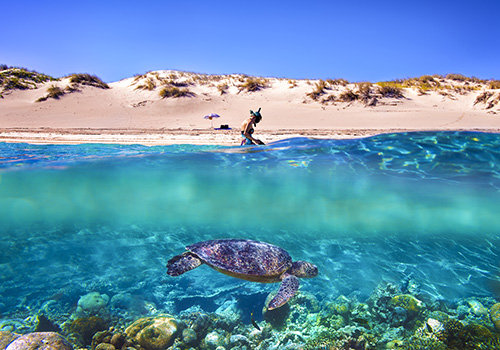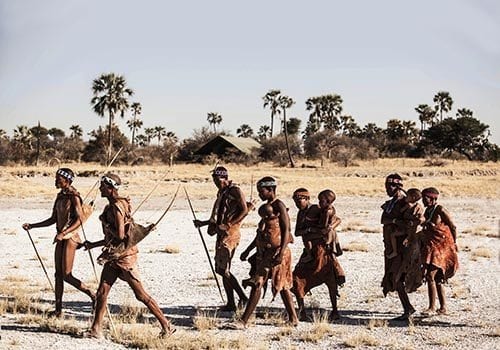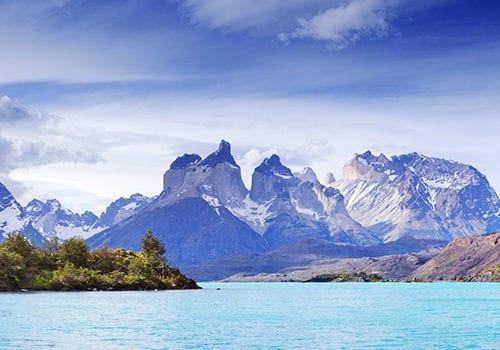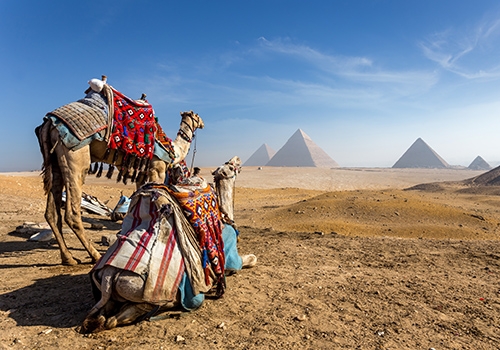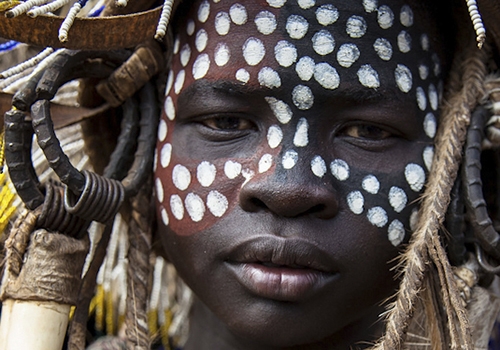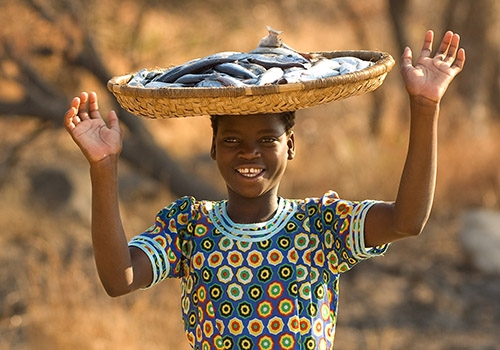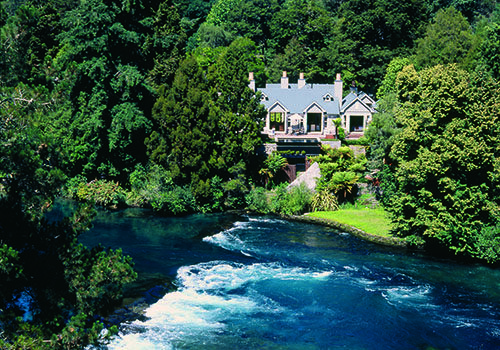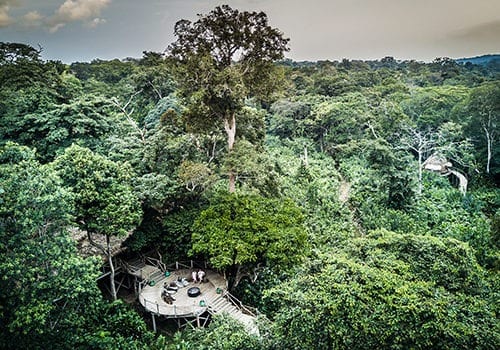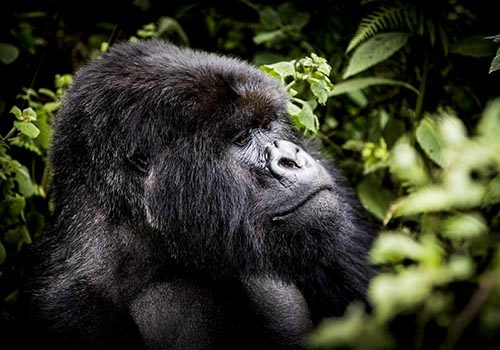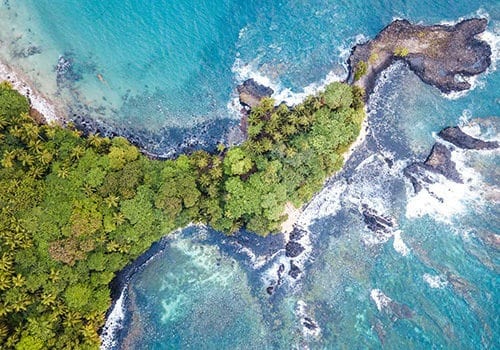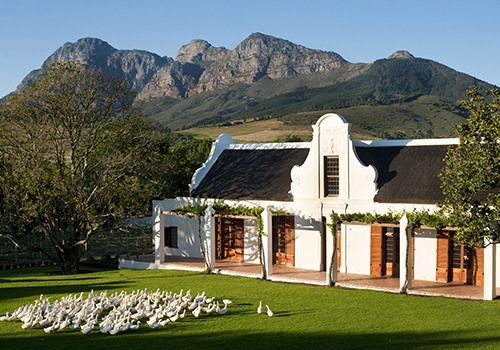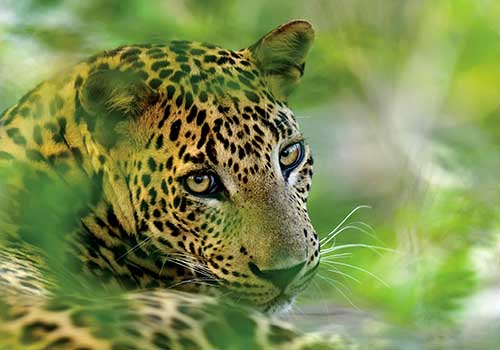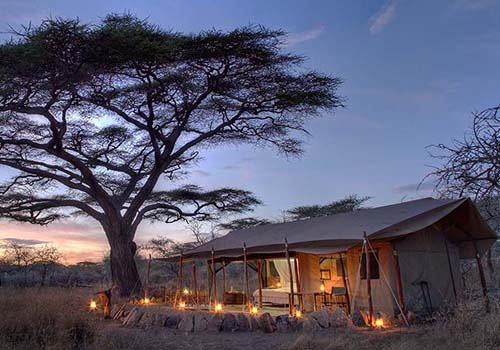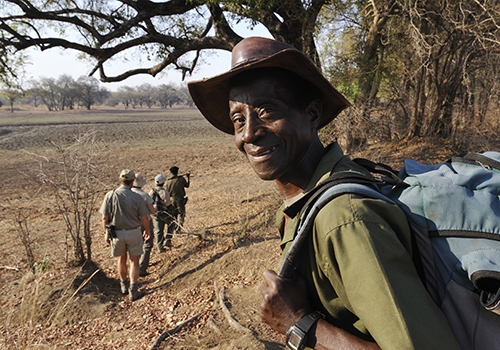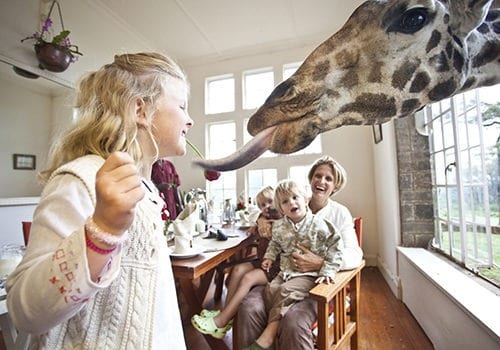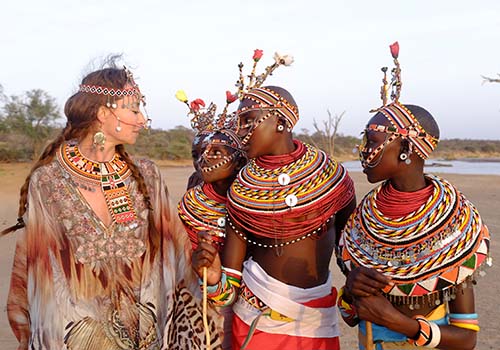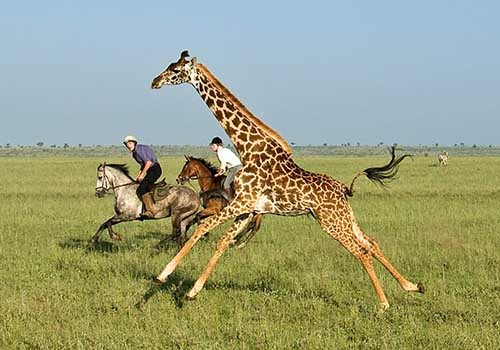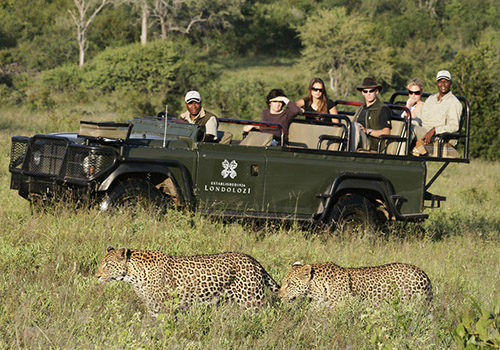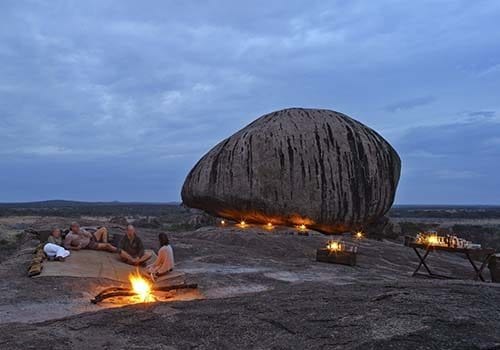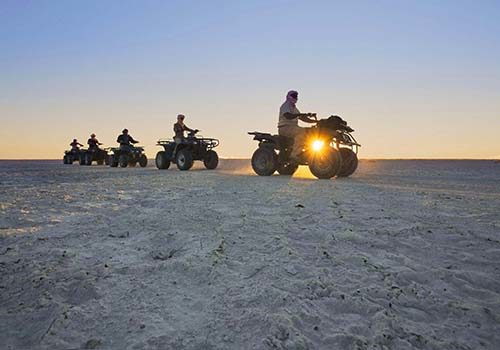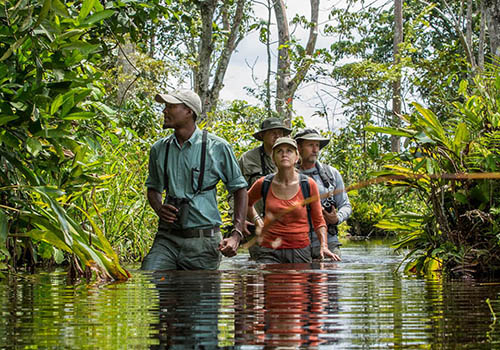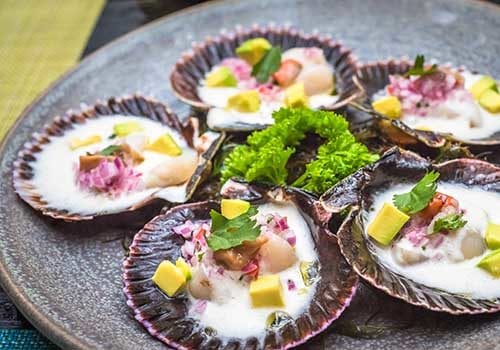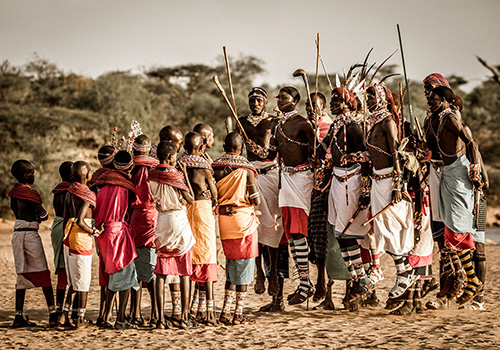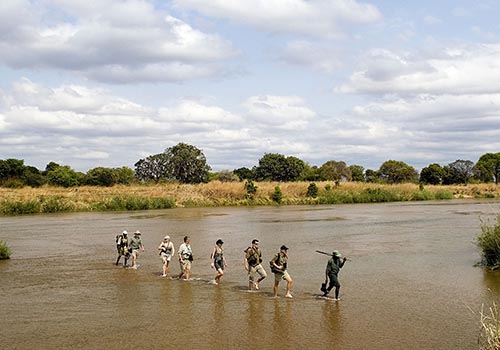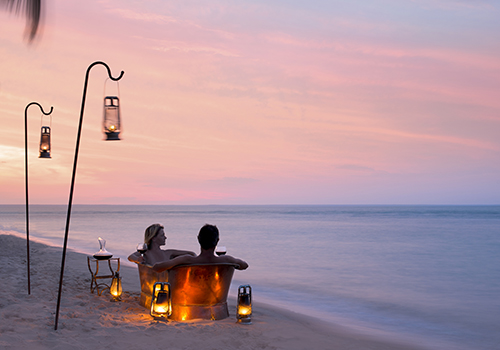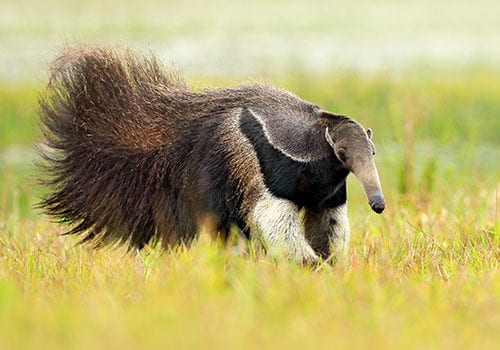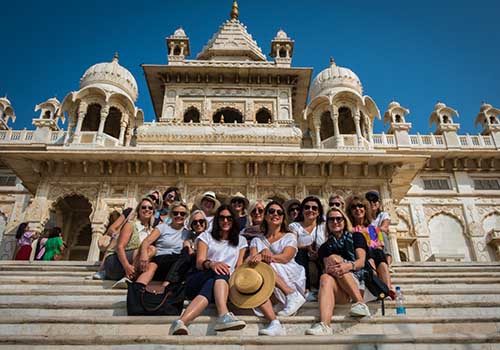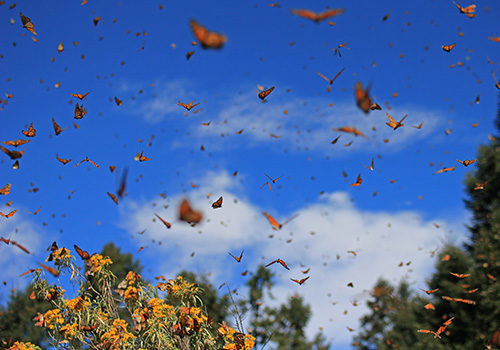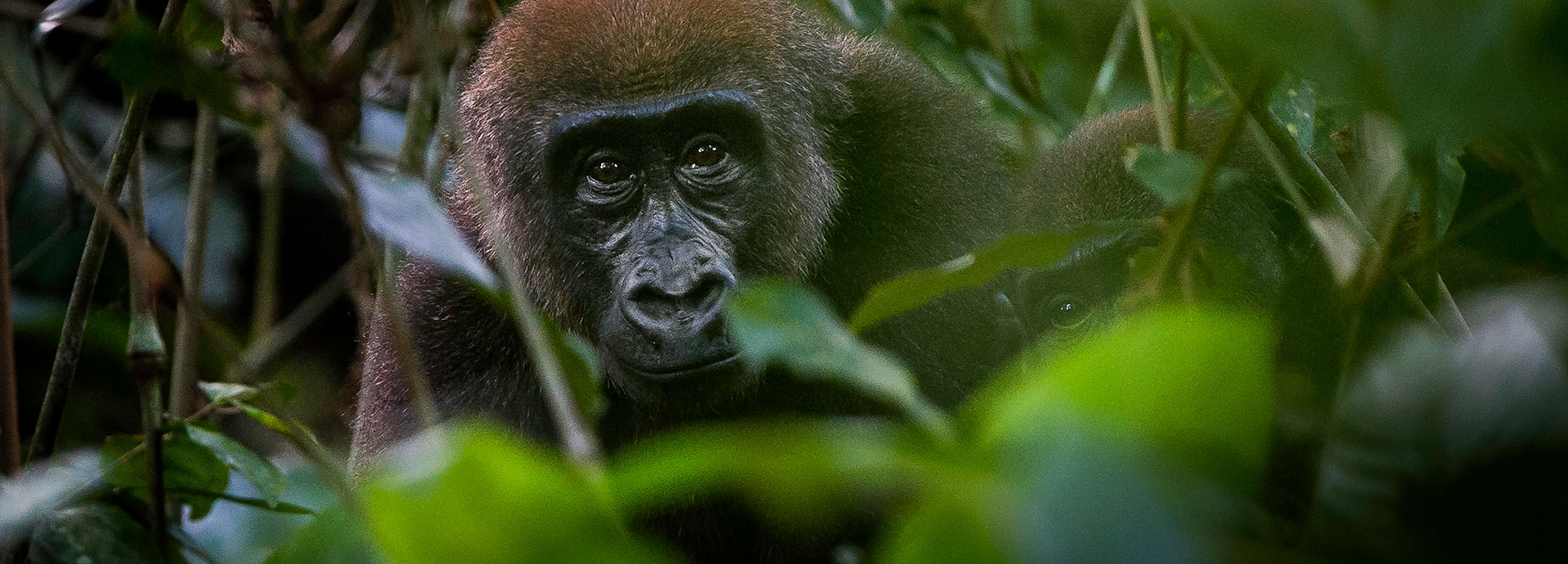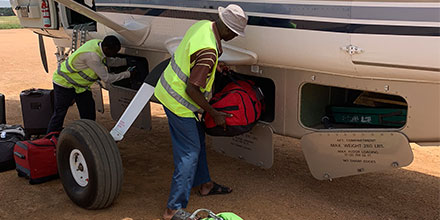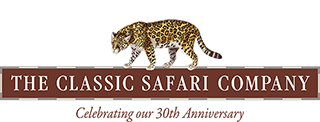
KEY INFORMATION TO PREPARE FOR YOUR JOURNEY
The Republic of Congo, also known as Congo-Brazzaville, is a Central African country situated along the equator. It shares borders with Gabon, Cameroon, the Central African Republic, the Democratic Republic of the Congo, and the Atlantic Ocean to the west. Known for its lush rainforests and diverse ecosystems, the country is a haven for wildlife enthusiasts. Tourist highlights include Odzala-Kokoua National Park, renowned for its lowland gorilla populations, Nouabalé-Ndoki National Park, and the vibrant capital city, Brazzaville, offering a mix of French colonial architecture and cultural attractions. The Republic of Congo provides a unique opportunity for eco-tourism and immersive experiences in pristine natural environments.
This information will assist in preparing for your departure and includes helpful travel hints for when you are there.
PLEASE NOTE: All pre-departure information was correct at the time of writing, but should be used as a guide only since requirements can change at short notice and without warning. Consult Smart Traveller or the appropriate authority prior to departure to confirm all details.
AT A GLANCE
REPUBLIC OF CONGO KEY FACTS
Time: GMT +1 hours | AEST -9 hours
Capital: Brazzaville
International Airport(s): Maya-Maya International Airport (BZV)
Official languages: French, but the local languages Lingala and Kituba are also widely spoken.
Religion: The predominant religion in the Republic of Congo is Christianity
Electrical Current: 230V | European style 2 round pin – Types C & E
Currency: Central African Franc | CFA
Australian Embassy in Zimbabwe: Australia does not have an Embassy or Consulate in the Republic of Congo. For consular assistance, contact the Australian Embassy in Zimbabwe | 1 Green Close, Borrowdale, Harare | T: (+263) 485 323 555 | www.zimbabwe.embassy.gov.au
Visa: Yes – currently required for Australian & New Zealand passport holders – refer to ‘Passport and Visa Requirements‘ for further details.
USEFUL WEBSITES
Smart Traveller – https://smartraveller.gov.au/Countries/africa/central/Pages/congo.aspx
Travel Doctor-TMVC – https://www.traveldoctor.com.au/destinations/congo
PUBLIC HOLIDAYS
January 1: New Year’s Day
Monday after Easter: Easter Monday
May 1: Labour Day
40th Day after Easter: Ascension Day
7th Monday after Easter: Whit Monday
June 10: Reconciliation Day
August 15: National Day
November 1: All Saints’ Day
November 28: Republic Day
December 25: Christmas Day
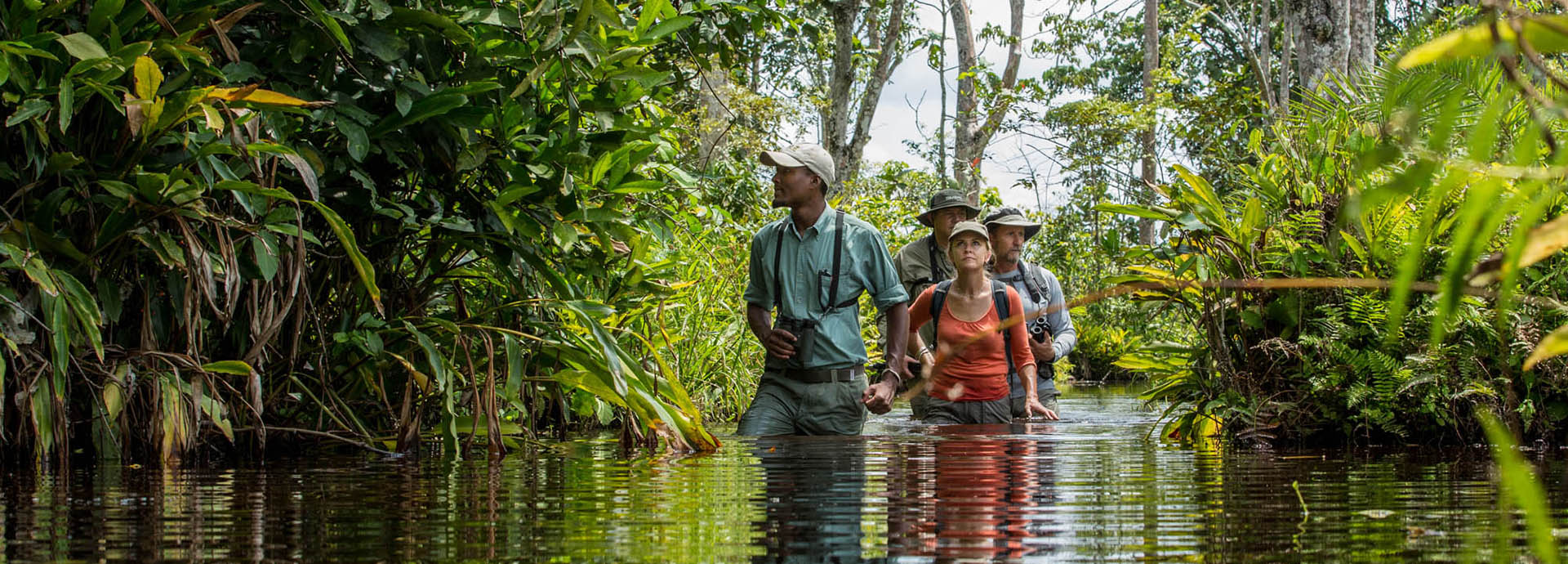
PASSPORT & VISA REQUIREMENTS
PASSPORTS
Your passport must be valid for at least six months after your return to Australia and have at least two blank pages for every entry and country you intend to visit on your journey. If your passport does not meet these requirements you must obtain a new one. The Australian Passport Office website is www.passports.gov.au.
It is a wise precaution to carry a photocopy of your passport separately and leave a copy at home. This will aid authorities in processing a new passport should yours get stolen or lost.
If you have dual citizenship and more than one passport, we strongly recommend that you use only one of these during your travels, as in some countries it is considered illegal to have two or more passports. Be sure to use the same passport on entry and exit from a country, and never surrender your passport.
If your passport name is different to your commonly used name, advise us of this and ensure your airline reservations match those of your passport name.
VISAS
Australian and New Zealand passport holders require a visa to enter the Congo.
There is no Embassy or Consulate for the Republic of the Congo in Australia and you therefore need to get a visa on arrival in Brazzaville, however this requires pre-planning and is not straightforward.
In order to obtain a visa you will require the following documentation:
- Valid passport with blank pages (as described above)
- Two copies of a visa assistance letter
- Two copies of your letter of invitation
- US$ 100 cash (2013 notes or later and broken into smaller denominations as the cost fluctuates between US60 and US$90 per person and no change will be available)
- Yellow Fever certificate of vaccination
Please speak to us about arranging a visa assistance letter and a letter of invitation. This has to be done three months prior to departure.
Once this is all sorted and you have landed at Maya Maya airport, proceed to the arrivals hall where you will need to complete an entry card. An official will meet you at this area, where they will ask for your passport, visa assistance letter, letter of invitation and US$100 in cash (broken into smaller denominations as border control do not usually have change available and the cost is between US$60 and US$90 per person). They will then issue your visa by stamping and signing a page of your passport. You may then proceed to baggage reclaim.

CLIMATE, WEATHER & SEASONS
CLIMATE
The Republic of Congo straddles the Equator and therefore its climate is broadly the same across the country; varying only slightly between the northern and southern parts. Generally, the north of the country is hotter, more humid and wetter than the south. From around September to November the Congo experiences its heaviest rains. These are followed by a short drier season from December to February; March to May brings another, shorter rainy season; then the long dry season, which is generally regarded as the best time to visit, runs between June and August.
While the months of May to September usually have the least rain, they also characteristically have fairly constant white cloudy skies; light which photographers may find tricky. The rainy season, on the other hand, has lots of impressive thunderstorms, often followed by clear blue skies and beautiful light. So travel during the rainy season is more challenging and less predictable but the upside is that while it’s dry the light can be perfect for photography.
| BRAZZAVILLE | JAN | FEB | MAR | APR | MAY | JUN | JUL | AUG | SEP | OCT | NOV | DEC |
|---|---|---|---|---|---|---|---|---|---|---|---|---|
| Temperature (°C) | 22-31 | 22-32 | 22-32 | 22-33 | 22-31 | 20-29 | 19-28 | 19-29 | 21-31 | 22-31 | 22-31 | 22-31 |
| Rainfall (mm) | 120 | 125 | 185 | 210 | 135 | 2 | 1 | 2 | 3 | 140 | 225 | 195 |
| OUESSO | JAN | FEB | MAR | APR | MAY | JUN | JUL | AUG | SEP | OCT | NOV | DEC |
|---|---|---|---|---|---|---|---|---|---|---|---|---|
| Temperature (°C) | 19-32 | 20-33 | 21-33 | 21-33 | 21-32 | 21-31 | 20-30 | 20-30 | 20-31 | 21-31 | 20-31 | 20-31 |
| Rainfall (mm) | 55 | 80 | 150 | 130 | 150 | 115 | 80 | 155 | 220 | 220 | 150 | 85 |

LUGGAGE & PACKING
LUGGAGE
Charter flight companies and some safari operators impose strict luggage restrictions.
The maximum luggage weight specific to your journey is 23kgs including camera equipment and hand luggage for travel through the Republic of Congo. Your bags must be soft-shelled and malleable.
If your luggage does not meet the criteria the charter companies will either leave your luggage behind, charge you for an extra seat onboard the aircraft (if one is available) or charter your bags separately at your cost. The charter planes have restricted space onboard, and, above all, the regulations are in place for your safety.
And if you are wondering how to pack everything in and keep it under weight read our blog – How to pack for a safari and keep it under 15kg
CHARTER FLIGHTS
The luggage storage on many charter flights across Africa looks like this:
The weight limit is a strict safety requirement to ensure the balance and carrying capacity of small aircraft.
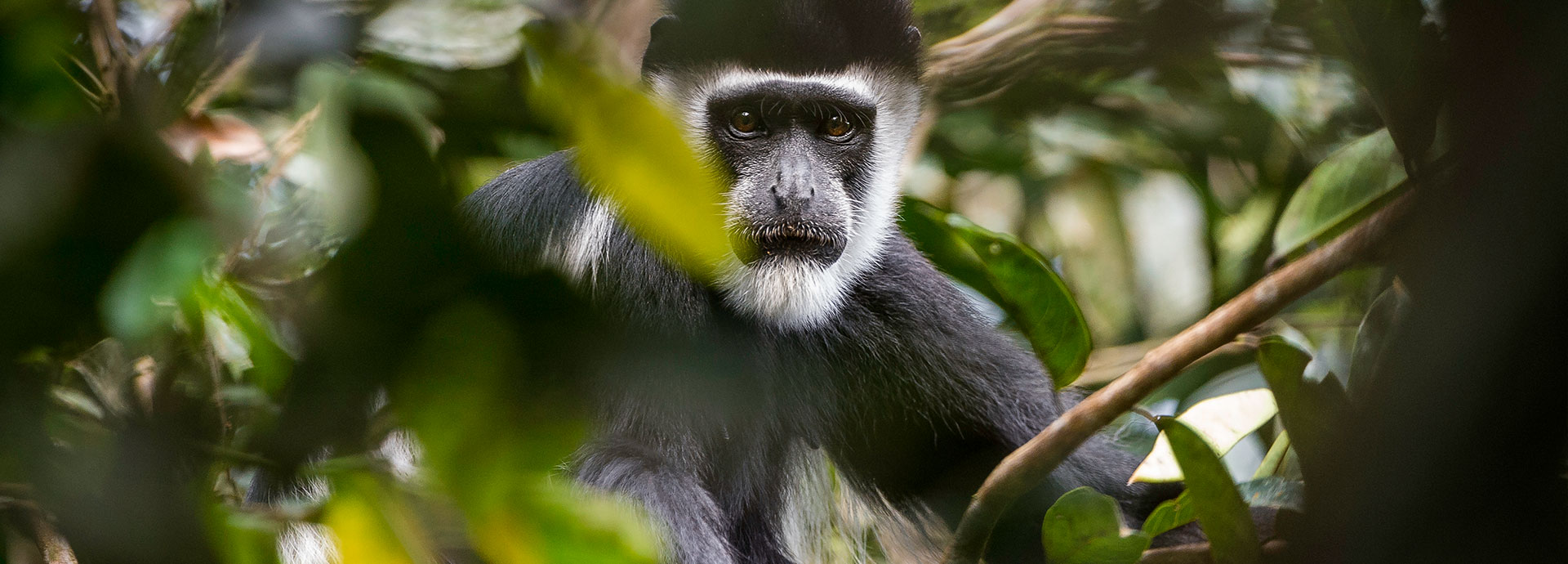
HEALTH & VACCINATIONS
VACCINATIONS
It may be necessary to take medical precaution prior to, and whilst travelling. As we are not qualified to offer advice, we recommend you contact your GP or the Travel Doctor-TMVC who have the most up‐to-date information available. Requirements are highly personal depending on your health profile and the activities in your itinerary. Some vaccinations must be given well in advance of travel, so we suggest seeking medical advice as soon as you start to plan your trip. Be sure to ask what vaccinations or medications may be required to enter the Congo and to re-enter Australia.
YELLOW FEVER : Vaccinations are compulsory for entry into the Republic of Congo. Proof of Yellow Fever inoculation is also required for entry into other African countries after visiting the Congo and for re-entry into Australia, if you have been to an area where Yellow Fever exists (this includes airport transfers of more than 12 hours). Speak to your GP or a travel doctor about this.
If you plan to trek to see gorillas, you will need to get a declaration of health form filled in by a qualified doctor to confirm that you are free from measles, polio and tuberculosis, and in good health. We supply this.
Some vaccinations must be given well in advance of travel so we suggest seeking medical advice at least 3 months prior to departure. At Customs and Immigration, whilst travelling and when returning to Australia, you must be in possession of your up-to-date vaccination book. So, be sure to have your medical professional complete the relevant information (they should also be able to provide you with the booklet if you do not already have one).
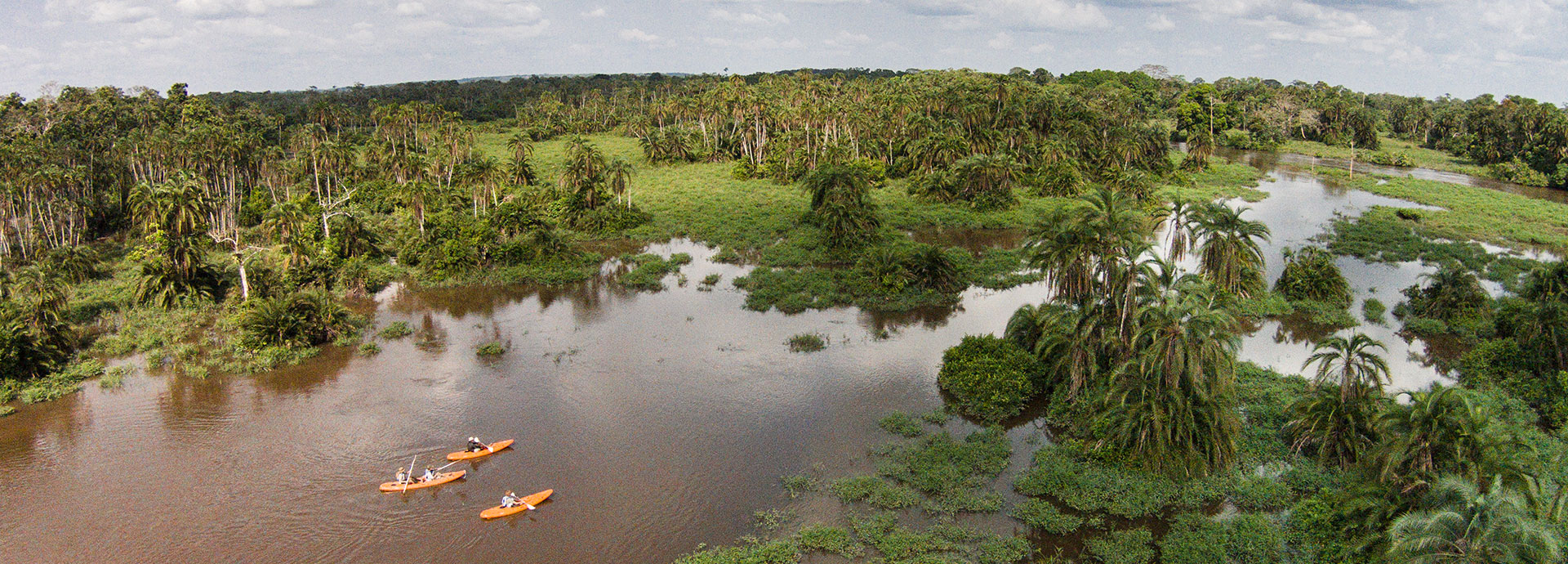
MONEY MATTERS
CURRENCY AND EXCHANGE
Congo’s currency is the Central African Franc (CFA) which is divided into 100 centimes. Australian dollars cannot be exchanged for CFA so travel with US dollars that may then be exchanged at banks or a bureau de change.
It’s best to take a mixture of money – credit card, debit card or travel cash card, plus cash just in case. You will need cash, preferably in small denominations, for gratuities. USD is accepted in hotels but you will need CFA if you visit any vendor or markets, so we recommend travelling with both. Only take as much cash as you feel confident carrying and never keep your cash, credit card and/or debit card in the same place.
ATM machines are only available in the towns and in top hotels, and are NOT widely available beyond that so do rely on these as your sole source of funds. Please be vigilant if you do withdraw cash.
Major international credit cards such as Visa and Mastercard are widely accepted. AMEX is not so popular and in some instances is not accepted at all. Please note that you need to take your physical credit card, and you need to know your PIN number, as not all places will allow you to ‘tap’. In some cases you may also be asked to sign.
It is recommended that you DO NOT change money on the black market as you are more likely to receive a lower rate of exchange or fake notes.
TELL YOUR BANK
We highly recommend you advise your bank of your destinations and travel dates. This should prevent any of your transactions being deemed as ‘out of the ordinary’ (and possibly stopped) due to their unexpected location.
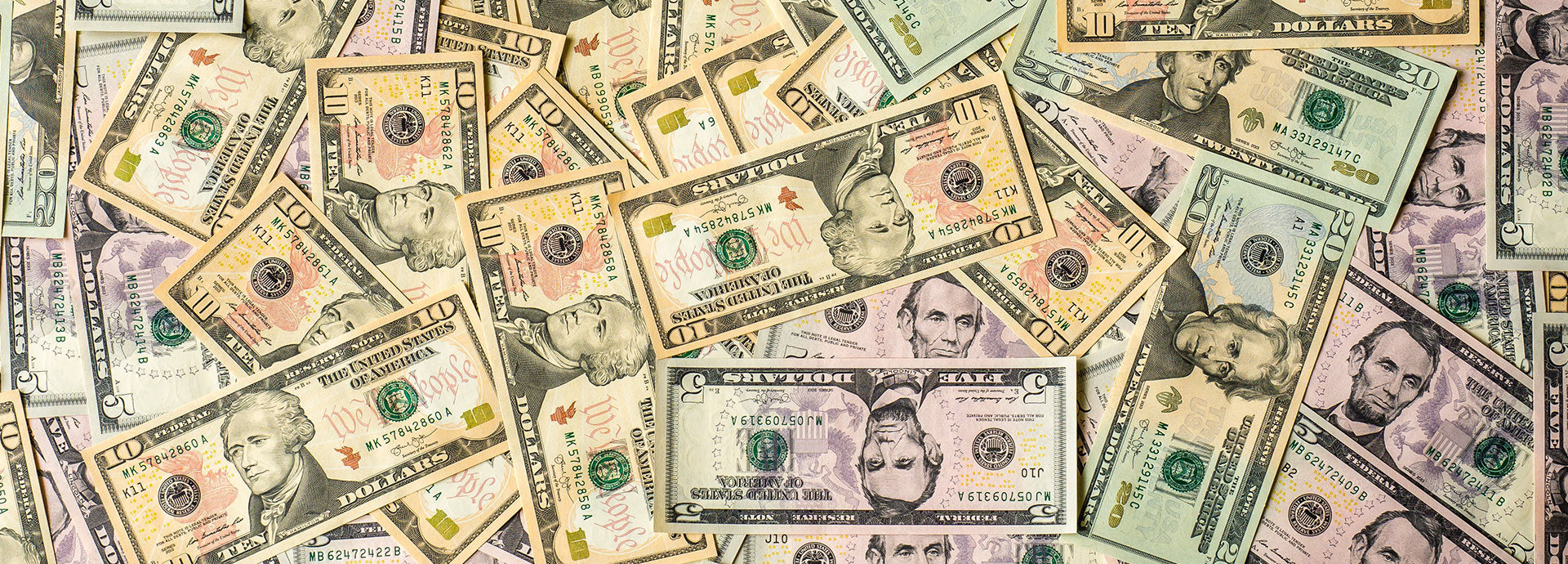
POWER, TECH & PHOTOGRAPHY
POWER
There are basically two main voltage systems used around the world: 110 Volt ‐ USA, Canada, Spain & Japan 220 Volt ‐ the rest of the world. In simple terms, the power supply available at the socket is roughly twice as powerful in 240V countries as in 110V countries.
The voltage in the Congo is 230 Volts, therefore if you wish to use any electronic devices from Canada, the US or Japan you’ll need a voltage converter AND a plug adapter. Australia operates a 220V currency and therefore you only require an adapter for Australian appliances.
The adaptor you will need for the Congo is a TYPE C or E, alternatively you may prefer to invest in an International Travel Adaptor that provides you with more than one option.
Many adaptors also have a USB port so you can plug your smart phone, or I‐product directly into the adaptor.
For the latest & most up to date information about voltage and what adaptors to travel with refer to: www.korjo.com
ADAPTORS
The Republic of Congo uses a 230V electrical current and a type C or E socket (European 2 round pin)


GORILLA TREKKING
GORILLA TREKKING GUIDELINES
Trekking to see western lowland gorillas is always going to be a major highlight of any trip to the Congo. These amazing great apes are critically endangered as they face risks from habitat loss and degradation, poaching, as well as transmitted diseases from humans. Worldwide there are less than 100,000 lowland gorillas remaining in the wild and the Republic of Congo is one of their last strongholds. Gorilla trekking was introduced in the Congo as a form of sustainable wildlife tourism to support the conservation of these critically endangered primates.
HABITUATION
In order to become habituated to the presence of tourists each gorilla group has undergone an extremely delicate process. Over the course of at least five years researchers spend time with the gorillas to gradually get them accustomed to human presence. This allows a few privileged visitors to safely observe them in the wild. However, the gorillas are by no means tame and care needs to be taken when around these magnificent animals. Please read the rules and regulations over the page which must be followed.
The habituation of these gorillas, which facilitates gorilla tourism, not only creates jobs and produces an economy for the surrounding communities but it also enables detailed observation of the gorillas that would otherwise not be possible in this environment. Therefore, your visit makes a hugely positive difference.
GORILLA GROUPS
In the Ndzehi Forest there are 20 gorilla groups, of which just two groups have been habituated. While on your trek to find one of the habituated groups you might see other gorillas but as they are not used to people they tend to be skittish and are likely to disappear very quickly. The movements of the gorillas are dictated by seasonal availability of forest fruits.
The two habituated groups are the Neptuno group (approx. 16 individuals) and Jupiter group (approx. 25 individuals). Which group you visit will depend on their movements and proximity to your camp.
PACKING LIST
- A small, lightweight backpack
- Hiking boots or solid shoes with grip – ideally waterproof
- Walking socks (long enough to tuck your trousers into) plus gaiters to wear over your trousers and shoes
- Leather or heavy canvas gloves – thick gardening-style gloves are ideal
- A waterproof jacket with a hood
- T-shirts or long-sleeved shirts
- Long pants – ideally trekking pants or lightweight cotton/cargo pants (not jeans as they are heavy when they get wet)
- Brimmed hat – ideally waterproof
- Water bottle
- Camera equipment including spare batteries, memory cards etc.
- A dry bag is a good idea for camera equipment whist not in use
- Insect repellant
- Binoculars
- Plug Adaptor
- A sense of adventure!

WHAT TO EXPECT ON THE DAY
You will need to provide a medical form completed by a medical health professional in order to trek. This is to clear you of any possibly harmful diseases to which the gorilla families are susceptible.
There will be a maximum of 4 guests and a guide and tracker on each trek. Your guide will give you a briefing before heading off on your trek. You will also be given a medical face mask to wear during your trek to protect the gorillas further.
The gorillas cover large distances from day to day, as they roam the forest in search of food. For this reason, the time taken to track the gorillas varies enormously, from as little as half an hour to as much as nine hours. The guides will use their knowledge of the gorillas’ habits and information from the previous day to locate the group’s whereabouts in an effort to reduce the time it takes for you to locate them with your guide but you may need some patience and a certain amount of stamina!
No matter how long it takes to find them, your group will have one hour with the gorillas. This is to avoid causing the animals any undue stress or getting them too used to human interaction.
Conditions vary according to the location of the gorillas and the terrain can sometimes be difficult with wet underfoot and dense vegetation, so a certain level of physical fitness is required.
IN THE COMPANY OF GORILLAS
When you reach the gorillas, the tracker may make grunting sounds to tell the gorillas that friends are approaching. They will use hand signals to communicate to you while you are near the gorillas. It is important that you remain quiet so as to not startle the gorillas. You will be asked to wear a mask.
Your trekking group will be instructed to stay together and to maybe crouch down whilst observing the gorillas. This is so the dominant male can see you at all times and the family does not feel threatened, surrounded, or overwhelmed. Although you may find a gorilla looking directly at you, you should maintain a subservient stance and look at it sideways or from a lower height.
Sometimes, as a release of tension or as a display to the rest of the group, a male gorilla may charge whilst pulling up vegetation and beating his chest. It is quite a sight but it’s vital that you remain calm, stand your ground and maintain a subordinate, position. The gorilla will stop before reaching you!
GORILLA ETIQUETTE
Strict rules are in place to ensure the safety of both gorillas and visitors. You will be given clear instructions by your guide and you must follow their instructions at all times.
- You will not be able to track the gorillas if you are unwell because gorillas are highly susceptible to human illnesses. If you suspect that you have a contagious illness such as a common cold, influenza or diarrhoea, report to the guide.
- If you feel the urge to cough or sneeze when you are near the gorillas, please turn your head away and cover your nose and mouth in order to minimize the spread of bacteria or viruses. You will be wearing a mask.
- Avoid taking an excessive number of photographs and never use flash photography. Tape over your flash if you cannot switch it off and make sure your cameras sound effects are turned to silent.
- Try to maintain a distance of at least seven meters from the gorillas and keep your voices down. The further back you are, the more relaxed the group will be.
- No food can be consumed when close to the gorillas but guides carry extra water for refreshment breaks in the forest.
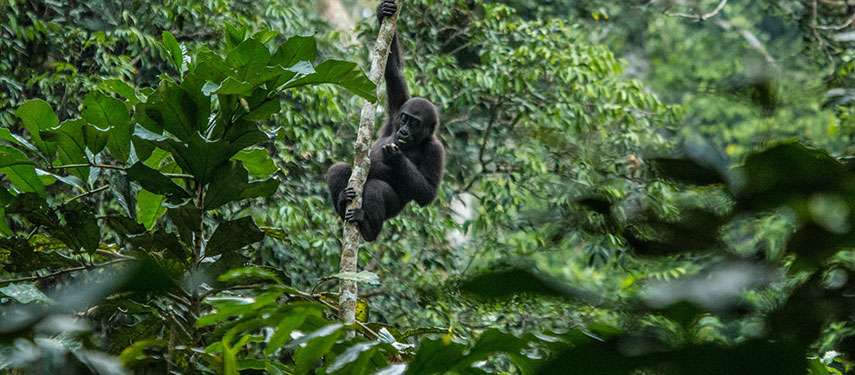
TIPPING GUIDE
Tipping is always greatly appreciated but is discretionary and the following should be treated as a guide only.
- Head guide – US$10 per traveller per day
- Porter/s – US$5
- Local staff as a whole – US$20 per traveller per day. This should be paid at the end of your stay into a communal tip box.


